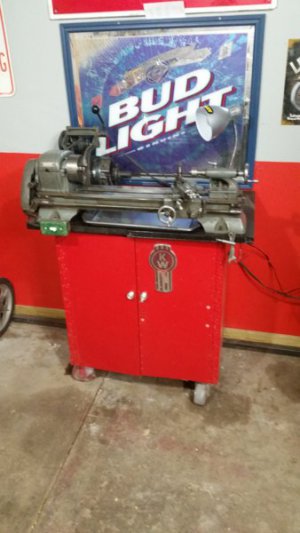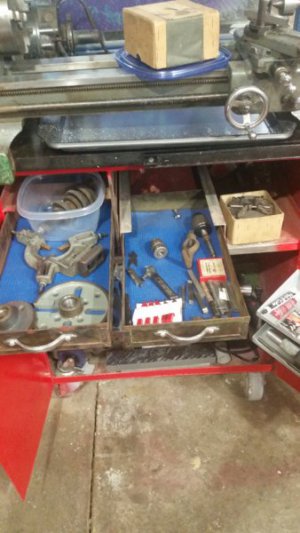newbie questions, Why is it important to level the lathe? What points do you level?
The lathe actually being level is not the end goal. It's a very useful feature "sometimes" if it's perfectly level, but it's by no means a necessity. The reason you have to level a lathe is simply that it is the most effectve, most cost effective, most practical, and most approachable way to get the lathe set up so that all of it's own geometry is true to it's self. It's a stepping stone really, as once that's done, you will "dial it in" by measuring your cuts.
You have to think of the lathe (or any machine tool) as being flexible. Rubber. Jello. Your final adjustments for accurate cutting will be in thousandths of an inch. The leveling gets the coarse part of that done to the best of your leveling ability, and gets you close enough to "true" that it's plausible to get where you want to be.
I can mount the lathe on thick steel plate that is reinforced with square tubing around the edge.
That would be a good thing to do. Not "required", but it will be rigid. That's a good thing. It keeps the lathe from flexing so much under various cutting conditions. Makes it easier to hit dimensions in different materials, and with different depths of cut. It makes the lathe overall more consistent. (I didn't say "perfect", I said "more consistant"......) What it won't be, is "flat". It may or may not be "flat" by a carpenter's level, but dollars to donuts you're still gonna want a shim under somewhere to get it where it wants to be.
Like wa5cab said, once it's all leveled, and then brought to cut "true", you're under no obligation to maintain "level". It's kind of nice if your tail stock doesn't fall off of the back, but short of that, if it's out a little.... It won't show in the work. Just so long as the lathe it's self remains true to it's self.




